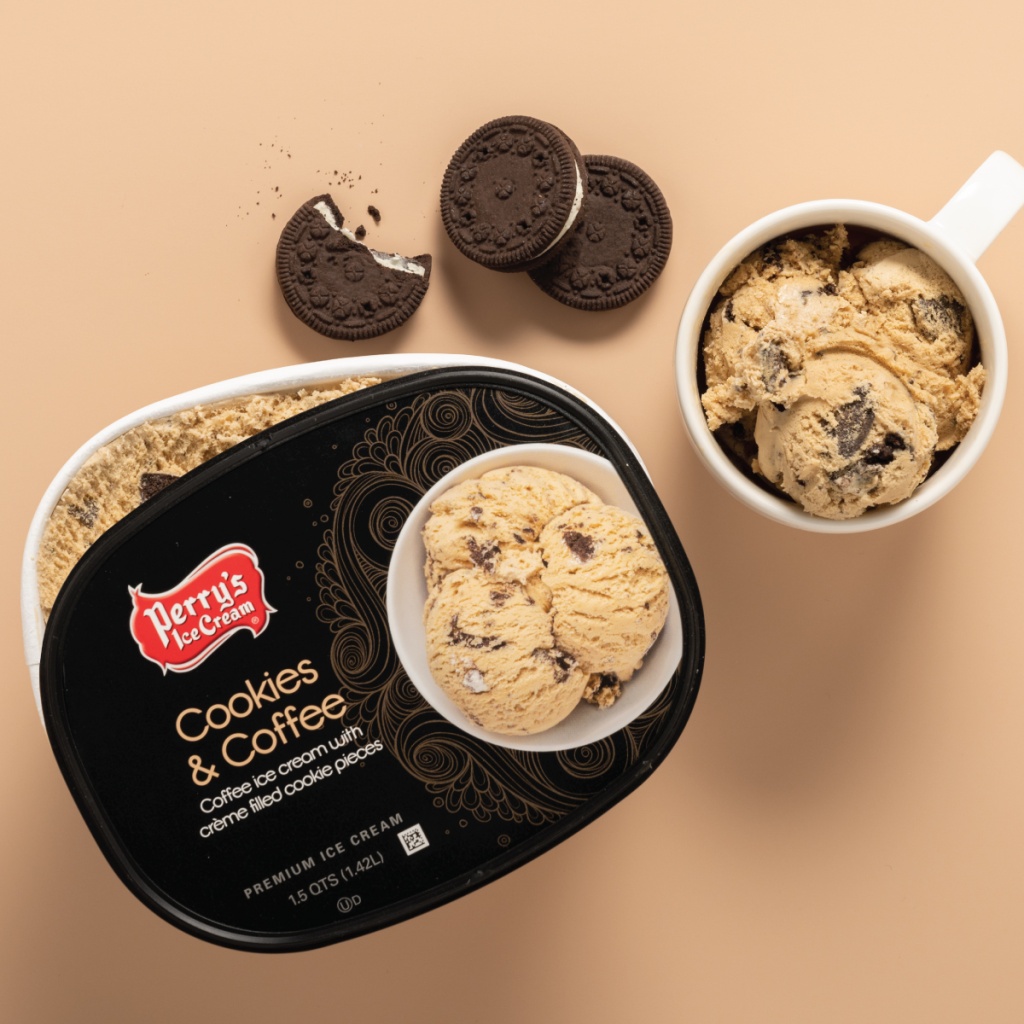Next time you’re in the ice cream aisle, take a look at the front label of your favorite ice cream. You’ll probably notice the basics, like the flavor name, flavor details, a mouth-watering photo, and maybe even some other fun things that catch your eye. But, take a closer look, and you might see some differences between flavors and brands that you haven’t noticed before. This difference being that one carton may read “ice cream” while another says “frozen dairy dessert.” This begs the question—is frozen dairy dessert just another name for ice cream? Sure, ice cream is frozen. It is dairy. And it is often enjoyed as a dessert. But is it ice cream? According to the FDA, it is not. We’re breaking down a frozen dairy dessert vs. ice cream here for you.

To understand how frozen dairy dessert is different from ice cream, we’ll first need to understand what it means to be ice cream. According to standards set by the FDA, ice cream must (1) contain a minimum of 10% dairy milkfat, and (2) have no more than 100% overrun and weigh at least 4.5 lbs per gallon.
Overrun is the amount of air that is whipped into ice cream during the freezing process. For example, with 100% overrun, for every gallon of ice cream base, you would end up with 2 gallons of finished ice cream. Products with lower overrun (think premium ice cream like Perry’s) tend to be denser and creamier. Anything that doesn’t meet these standards must be labeled “frozen dairy dessert.”
Why is Perry’s labeled “Premium Ice Cream”?
You’ll notice Perry’s 1.5 QTS flavors and ice cream bars are labeled “premium ice cream.” “Premium” isn’t just fancy marketing jargon—it’s another distinction in the ice cream category.
According to the International Dairy Foods Association, there are 4 quality segment distinctions:
- First, there’s “economy” ice cream. It meets the FDA’s overrun requirement and sells for a lower price than regular ice cream.
- Second, there’s “regular” ice cream. Regular ice cream meets the FDA’s overrun standard. The weight of regular ice cream tends to fall around 65g per ½ cup. Regular ice cream has 10-11% butterfat and 90-100% overrun.
- Then, there’s “premium” ice cream. Premium, like Perry’s, has a lower overrun and higher fat content than regular ice cream, and also uses higher quality ingredients. Premium ice cream typically has 11-15% butterfat and 60 to 90% overrun.
- Finally, “super-premium” ice cream has a very low overrun and high fat content and uses high-quality ingredients. Super-premium has an overrun of less than 50% and contains 14 to 18% butterfat. (PS: Perry’s pints fall into this super-premium category, that’s why they have that “extra indulgent” burst on the front of the carton!)
Other Perry’s categories
Beyond our “premium ice cream” label, you’ll see our products labeled as Frozen Yogurt, Sherbet and our dairy-free line as Frozen Dessert.
It depends. For some, the difference isn’t noticeable or only so in a side-by-side comparison. For others, and especially for ice cream connoisseurs like ourselves, the difference is clear. Ice cream made with a higher fat content and less overrun are richer and creamier, while economy and regular ice creams and frozen dairy desserts are typically less dense and have a lighter and more airy texture.
If you’re comparing nutrition labels, you might notice that some frozen dairy desserts have a lower calorie and fat content than ice cream but have more added ingredients. Be sure to check those ingredients.
Decisions in the freezer aisle
The next time you see “ice cream” or “frozen dairy dessert” in the freezer aisle, you’ll now know there’s a difference. At Perry’s, our job is to make ice cream that just tastes better. We accomplish this through our small-batch, slow-cooked process using our family’s recipe of high-quality ingredients and locally sourced dairy. We’ll keep churning out our very best, because you deserve the good stuff.
Contributors: Kristin Rozewski & Gabriel Cox
